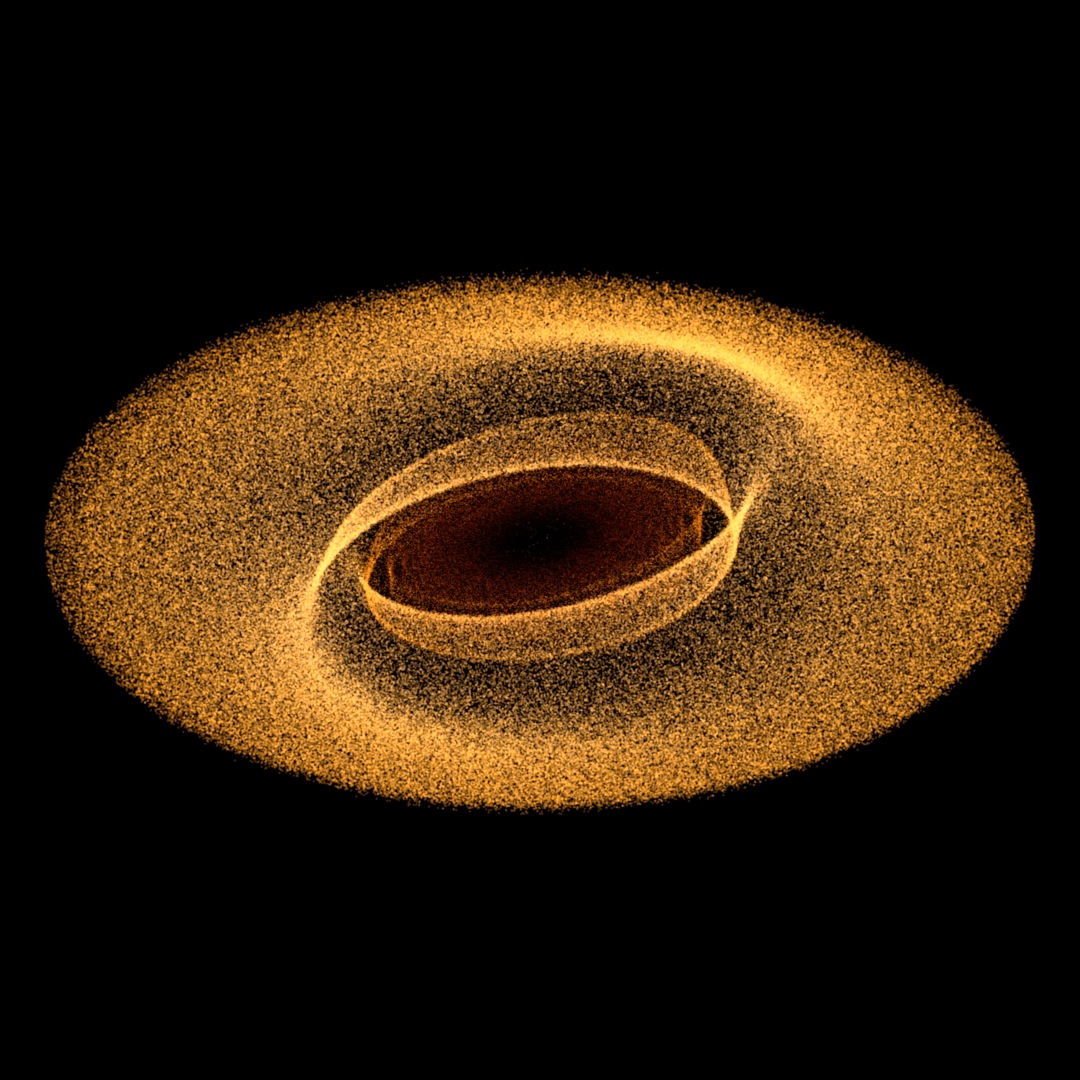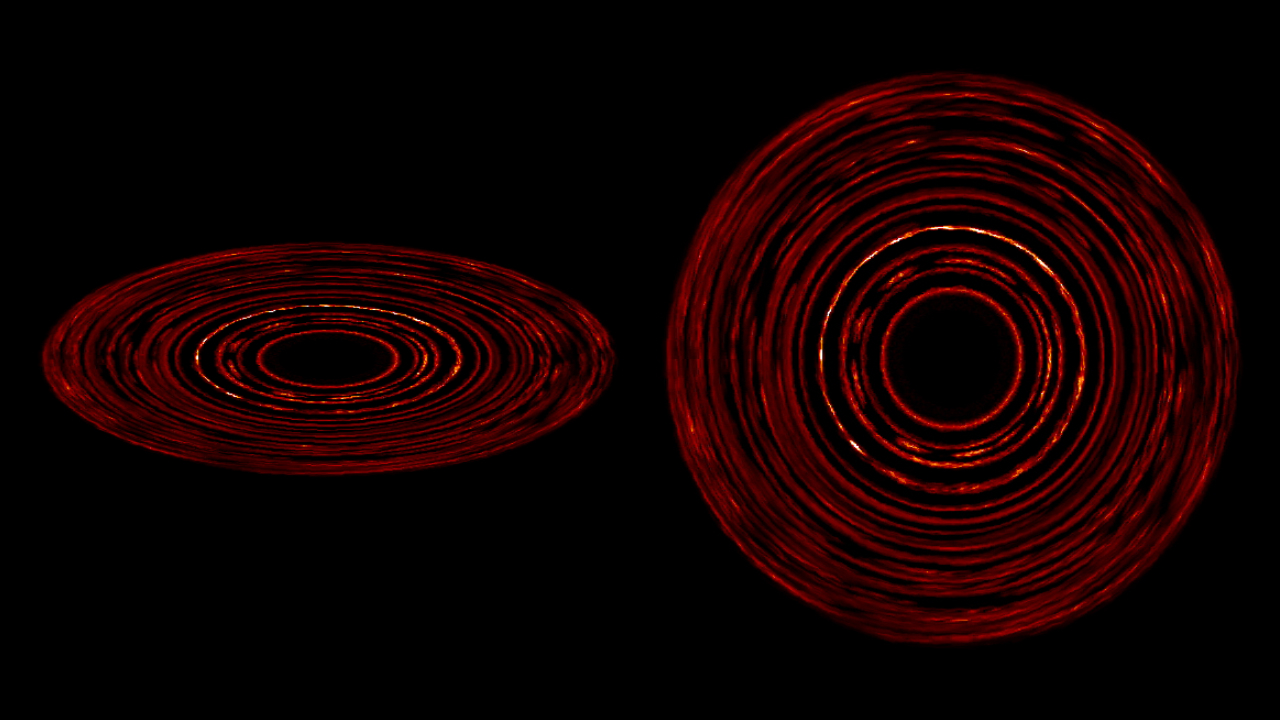Debris Disks Generate Spirals, Rings and Arcs in Simulations
Astronomers thought patterns spotted in disks around young stars could be planetary signposts. But is there another explanation? A new simulation performed on NASA's Discover supercomputing cluster shows how the dust and gas in the disk could form those patterns no planets needed.
Credit: NASA's Goddard Space Flight Center
Music: "Hyperborea" from Killer Tracks.
Watch this video on the NASA Goddard YouTube channel.
Complete transcript available.
When exoplanet scientists first spotted patterns in disks of dust and gas around young stars, they thought newly formed planets might be the cause. But a recent NASA study cautions that there may be another explanation one that doesn’t involve planets at all.
An alternative explanation suggests the dust and gas in the disk can form the patterns themselves when they interact with starlight.
When high-energy UV starlight hits dust grains, it strips away electrons. Those electrons collide with and heat nearby gas. As the gas warms, its pressure increases and it traps more dust, which in turn heats more gas. The resulting cycle, called the photoelectric instability (PeI), can work in tandem with other forces to create some of the features astronomers have previously associated with planets in debris disks.
A 2013 study suggested PeI could explain the narrow rings seen in some disks. The model also predicted that some disks would have arcs, or incomplete rings, which weren’t directly observed in a disk until 2016.
The new simulation includes an additional new factor: radiation pressure, a force caused by starlight striking dust grains.
Light exerts a minute physical force on everything it encounters. This radiation pressure propels solar sails and helps direct comet tails so they always point away from the Sun. The same force can push dust into highly eccentric orbits, and even blow some of the smaller grains out of the disk entirely.
The new research modeled how radiation pressure and PeI work together to affect the movement of dust and gas, and also found that the two forces manifest different patterns depending on the physical properties of the dust and gas.

GIF of a new simulation performed on NASA's Discover supercomputing cluster that shows how dust and gas in a circumstellar disk could form patterns without planets.
Credit: NASA's Goddard Space Flight Center
Download the NASA disk simulation at full-resolution version.
Credit: NASA's Goddard Space Flight Center
Same as above, with additioanl scales showing the physical size of the disk and the density of dust.
Credit: NASA's Goddard Space Flight Center

Arcs, rings and spirals appear in the debris disk around the star HD 141569A. The black region in the center is caused by a mask that blocks direct light from the star. This image incorporates observations made in June and August 2015 using the Hubble Space Telescope's STIS instrument.
Credit: NASA/Hubble/Konishi et al. 2016

Labeled version of the above.
Credit: NASA/Hubble/Konishi et al. 2016
For More Information
Credits
Please give credit for this item to:
NASA's Goddard Space Flight Center. However, Individual items should be credited as indicated above.
-
Producer
- Scott Wiessinger (USRA)
-
Science writers
- Jeanette Kazmierczak (University of Maryland College Park)
- Francis Reddy (Syneren Technologies)
-
Scientist
- Marc Kuchner (NASA/GSFC)
Release date
This page was originally published on Thursday, January 11, 2018.
This page was last updated on Wednesday, May 3, 2023 at 1:47 PM EDT.
Series
This page can be found in the following series:Related papers
https://arxiv.org/abs/1709.07982
https://arxiv.org/abs/1709.07982

